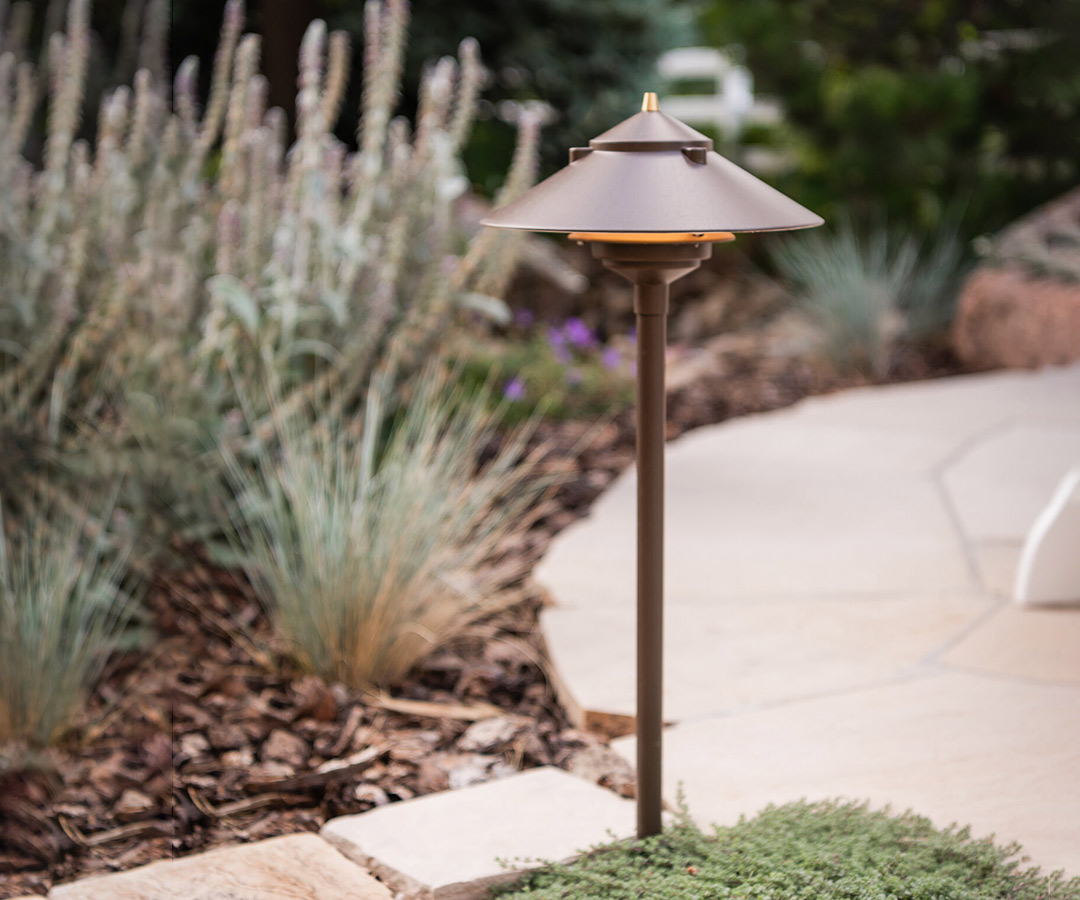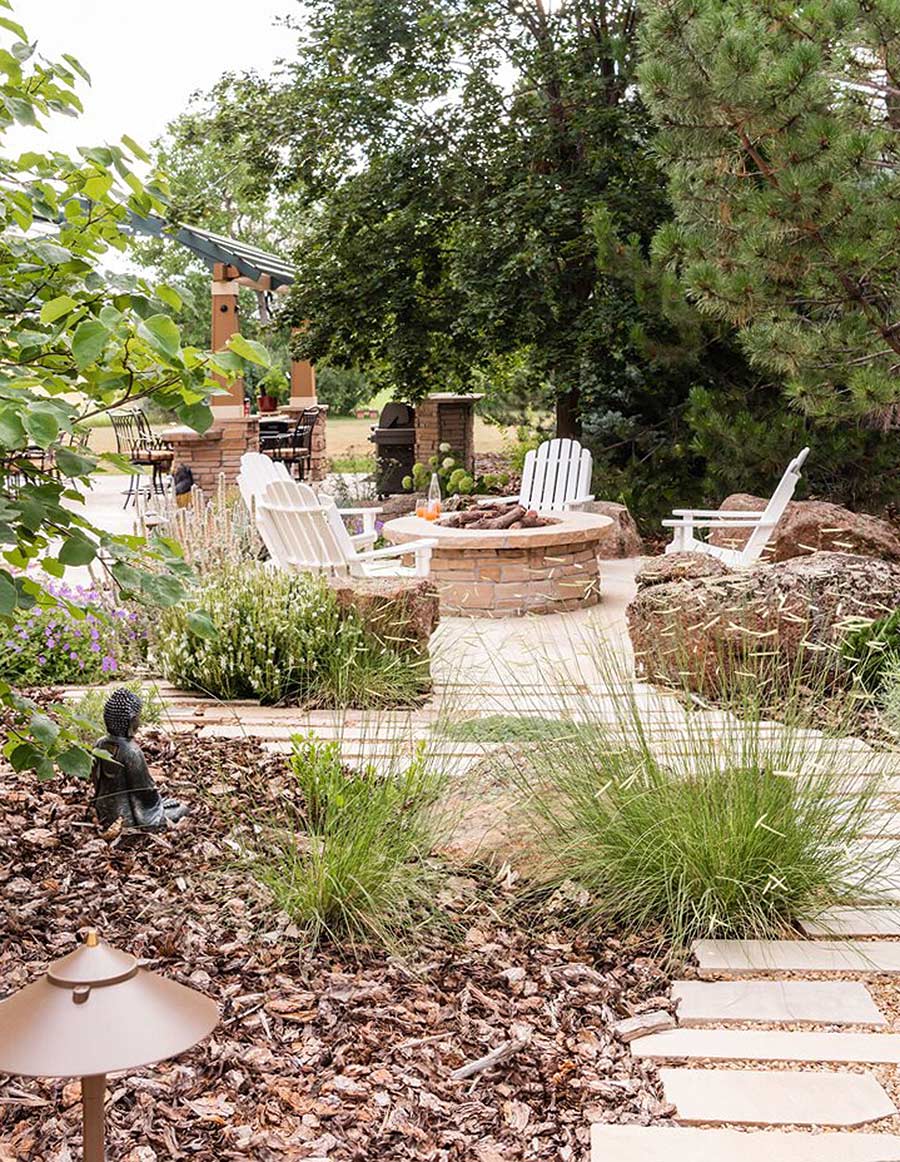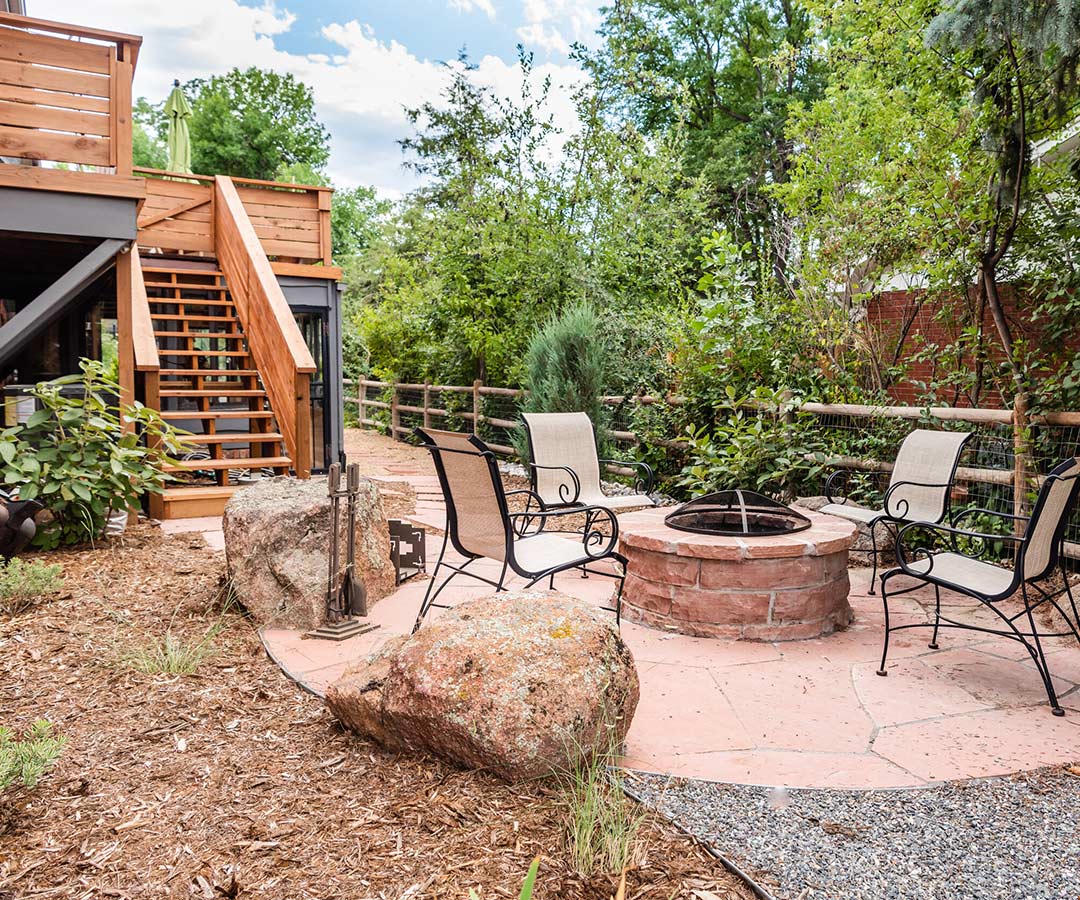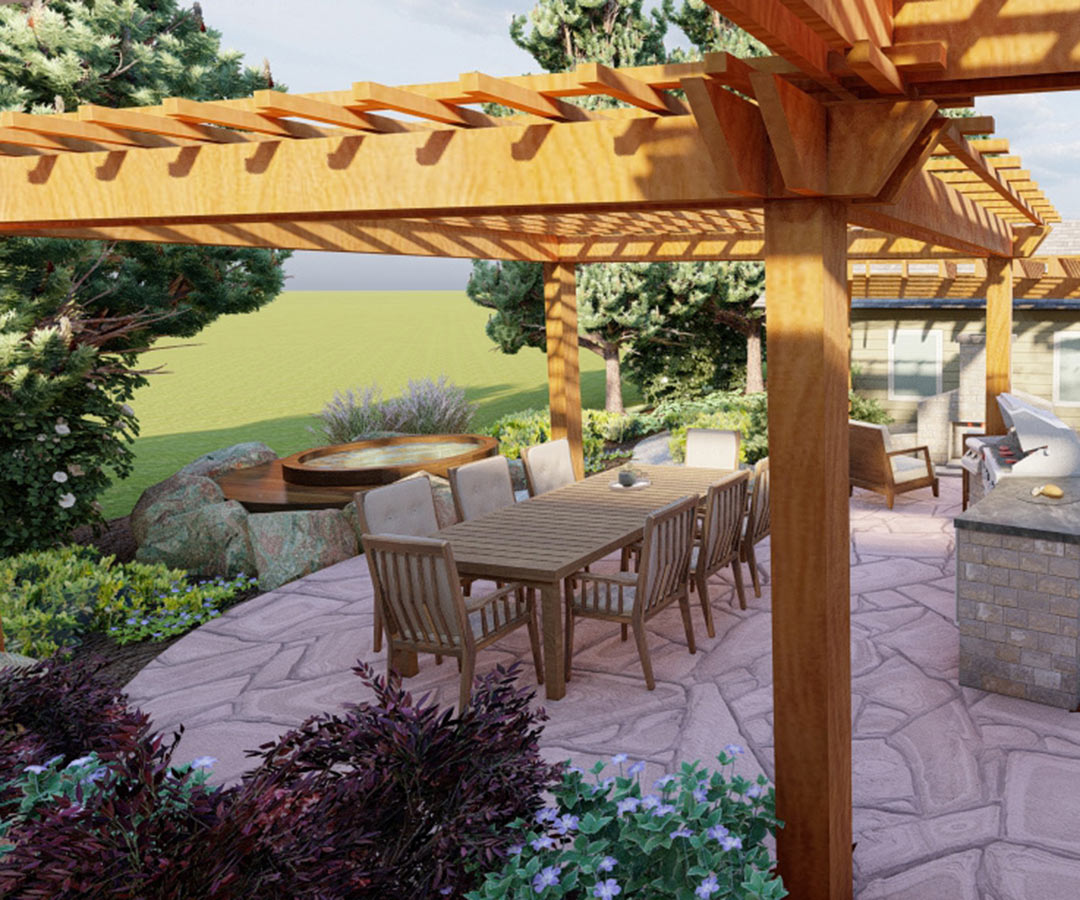Landscape lighting, is it the icing on the cake?… Or an absolute necessity? At Helios, we would argue that it can be both.
Long winter nights and even summer BBQ parties can be made both safer and much more beautiful by landscape lighting. There are few things other than a fresh layer of mulch or tree pruning that can do as much to increase the value of your landscape as instantaneously as landscape lighting.
From a security standpoint, landscape lighting can deter porch pirates and burglars while also making it easier for you to find your footing around your home if you get home from work late at night or need to leave early in the morning. Landscape lighting also improves visibility for other security fixtures such as Ring doorbells or security cameras. The market is flooded with different options, from solar fixtures you can buy online or at box stores, to fully integrated systems that can be controlled from your smartphone. Almost all fixtures these days come with LED bulbs, making them energy-efficient and environmentally sustainable. The transition the residential market has made towards low voltage lighting means that anyone can safely install their own lighting and wires can be buried just beneath the mulch for easy installation and access. However, we recommend strategically running your wires along hardscape edges or using some conduit if you do need to have the wires across a wide-open area. It can be so annoying when all you want to do is pop in a few extra plants from the nursery and you accidentally break your wires with your shovel!
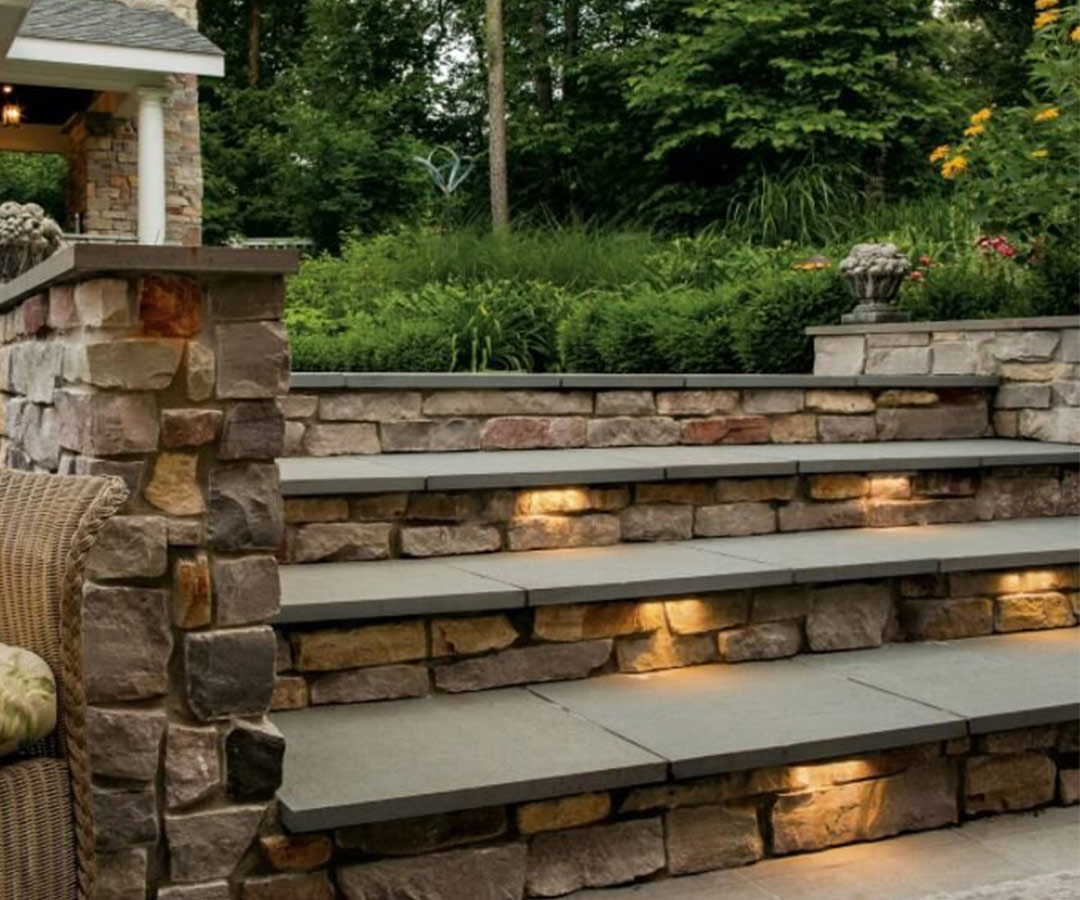
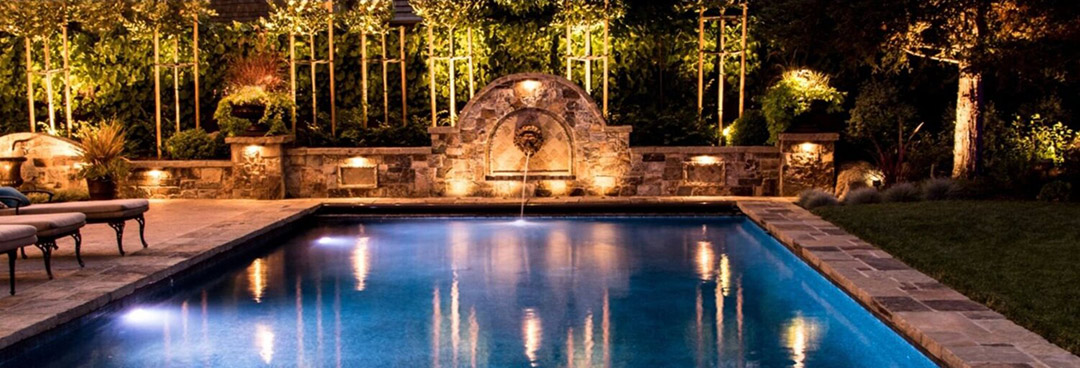
You get what you pay for.
As with most things, you definitely get what you pay for when it comes to landscape lighting. Premium companies such as Unique Lighting offer 10-15 year warranties for most of their fixtures. Their Odyssey series even offers a lifetime warranty on fixtures. This is because these fixtures are made of premium metals such as brass and copper and are designed to last. Products that are made from resin or plastic will have a much shorter lifespan and will degrade much faster with exposure to the elements. If you’re new to landscape lighting or this is your starter home, you may want to consider investing in just a few lights from your local box store. However, be warned! Once you experience a beautifully lighted landscape you’ll be hooked and will want to add more and better fixtures!
If we had to recommend a basic starter landscape lighting kit to suit almost any landscape, it would need the following components; path lights, a light for a tree on the way to the front door, and a couple of wash lights to gently illuminate the front of the house. While path lights are pretty self-explanatory, there are many different options. Styles vary from traditional to modern, can be mounted in the pathway, next to the pathway, and shine either down upon it, up from it, or across the pathway. Avoid the “airport runway” look and scatter only a few lights where necessary. From a light pollution standpoint, we recommend choosing lights that will shine down or across the walkway whenever possible. You can read more about the International Dark-Sky Association at the link below but even with our landscape lighting, if we can keep lights focused towards the ground rather than letting the light escape up into the sky, we collectively can greatly increase the number of stars we can all see in our night skies.
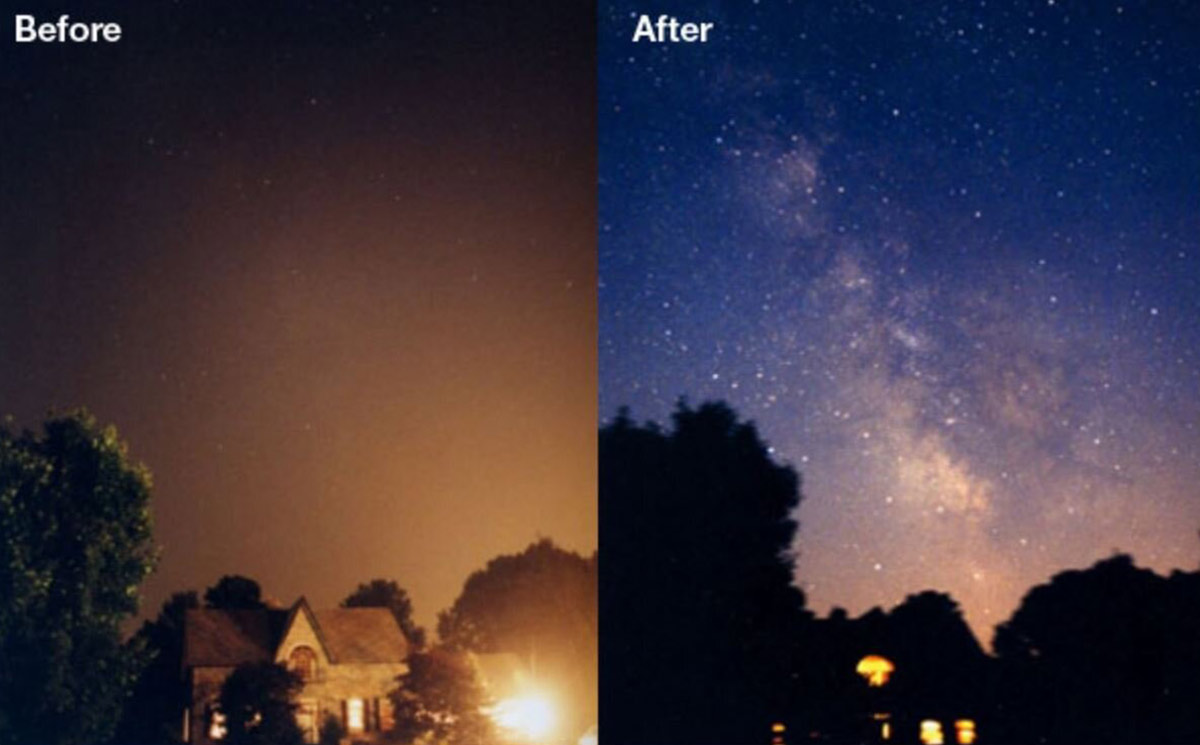
Nighttime before & after showing the negative effects of landscape lighting pointed toward the sky.
Taken during the 2003 Northeast Blackout, a massive power outage that affected 55 million people. Photo by Todd Carlson
Tree lights can come in various forms. One of our favorite effects is called moonlighting. This is where you mount one or multiple downward-facing fixtures in the canopy of the tree to illuminate the ground and branch structure below. Essentially, you have the beautiful effect of a full moon in that part of your landscape even when the moon may not be out that night. There are other specialty effects that can be achieved with spotlights to form shades on nearby structures like if you have some trees lining a fence. This can give your landscape depth at night and expand your sense of safe space at night. Other times we use uplights in trees to illuminate the trunk and branches from below. These can be especially useful if you have a multi-trunk tree such as a Japanese maple that you want to highlight the branch structure. Sometimes, even combining an uplight and downlight (moonlight) on the same tree can be especially beautiful as a focal point in your landscape.
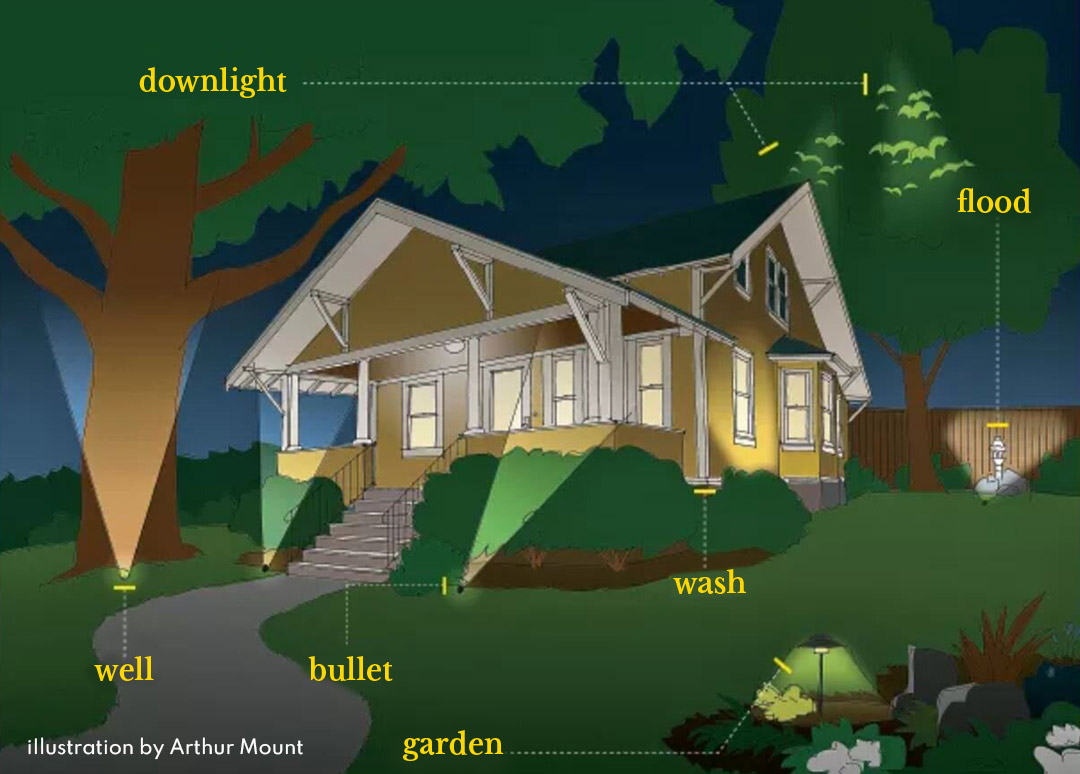
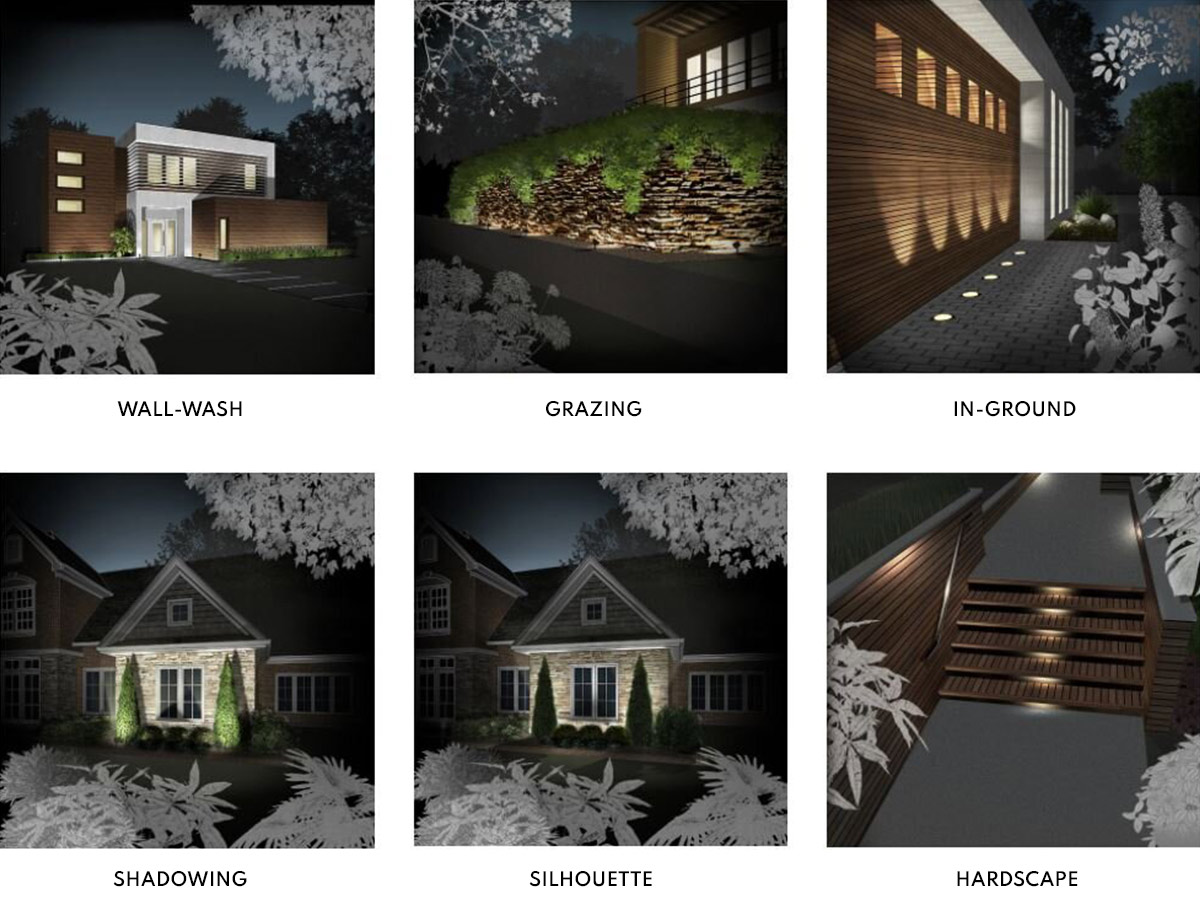
The last type of light we mentioned in our starter kit is a wash light. This light is usually mounted on the ground and has a wider spread of its light but with a softer focus. You can use these lights to illuminate boulder outcroppings, structural plantings, or annual color at night. We recommend first considering highlighting the front of your house with these wash lights as a starting point. Choose positions on either side of the front door to highlight stone siding or foundation plantings to frame your front entry. This will give your home curb appeal at night.
This is definitely only the tip of the iceberg when it comes to landscape lighting. As you can see, there are so many more possibilities than your front porch light and a string of café lights over your back patio! If you’re interested contact us today and we can help design a lighting plan just for you!
Written by: Jaclyn Salts
For more information, check out these websites:
